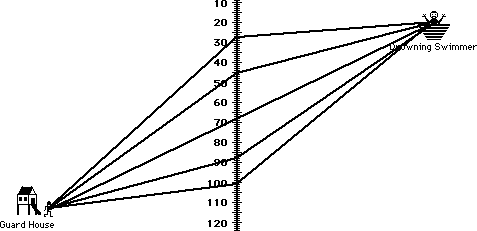Last year, I asked this question on my Facebook page:
After 12th, should you send your kid to study abroad (US, UK, France) or should you have them do undergraduate studies in India and consider studies abroad only for post graduate studies? Assume that finances are not a major problem. Assume that the kid will go to a “good” or at least “above-average” college abroad. What do you think?
Other articles in this series
If you find this topic interesting, you probably would be interested in these other articles I’ve written:
- How to choose an Engineering college & branch after 12th
- How I studied for IIT-JEE
- Should you encourage your child to take a gap year before college?
- My Gap Year After 12th – by Nishchala Bhandari
- After 12th Please send your child away from home – preferably a hostel
- Quitting Engineering
- If your child is unsure of what to do after 12th, consider Liberal Arts
This question sparked off a great discussion where lots of people chimed in with their opinions and experiences. You should read the whole page, but for the lazy, I have captured some of the most interesting perspectives here.
Starting with my own opinion:
There is no question in my mind that most good/above-average colleges in developed countries will impart better education than good colleges in India. However, there is too much of a culture shock, too much freedom, too many distractions abroad, and a significant probability of the kid not being able to negotiate them all safely.
There is a small fraction of kids who are very mature, and very “sorted” in life at the age of 17, and know exactly what they want out of their education and their life – they should be allowed to (encouraged to?) go abroad after 12th. All others should wait until graduation.
Update: After reading the comments of a bunch of my friends, my own views have now changed, and I’m generally of the opinion that if you can afford it, and your kid can get into a decent school in the US, then going to the US is worth it.
Dhairya Dand disagreed with me:
without a wink – abroad.
- Since when did not being sorted out at 17 become a bad thing?
- A cultural shake up is precisely what a 17 year old needs to form his world views, why wait till 22?
- Grad life at 22-24 is focused, she/he has already committed to an area without being fully exposed to all the options one could have had in undergrad.
Rahul Gangwal pointed out:
i must say one thing here … once you are alone irrespective of age – the person does goes wild initially but matures 100 times more quickly than if he was at home
And Vaibhav Domkundwar came out strongly in favor of the US education system:
Based on my experience of landing at UC Berkeley right after my bachelors in India + interviewing/hiring 100s of freshers in Pune over last 10 yrs, I’d say kids are better off doing undergrad in the US and perhaps high school too. A lot depends on “how you learn” IMO. The undergrad kids, “on average”, at Berkeley were far superior in academic as well as non-academic than the international students from China and India.
Most importantly, I feel the perspective that you get in a (good) US university is far richer & wider than what you can in India, even now. Lastly, based on my experience in India over the last year, it feels like the change in the education system broadly is still short of what it needs to be.
Ankesh Kothari came up with a slightly altered suggestion:
sending your kid abroad as early as possible is a good idea. If you think he is not mature enough, then don’t send him to a 4 year college – send him for a semester long study abroad program. But the more different and varied experiences they get early on in life, the quicker they will find their center. The more hustling they have to do, the more confidence they will be later on in life.
And Ravindra Jaju pointed out that maybe as parents we worry too much about our kids getting “spoilt”:
If you want to focus on good education and holistic development, send them abroad. Kali might find them in this yug, but that’s already shaped by their initial 17 years at home. If you’d still like to keep a close watch on other aspects, keep them in India. Kali might still find them, though.
Sameer Nene was less diplomatic. He pointed out that maybe they need to get “spoilt”:
If possible, the kid should get to explore the culture on his/her own. This is important from a development standpoint – how to judge what right is or wrong or okay to do etc etc. You don’t want them to look at the world through your prism – they’ve already done that until they leave home.
Dhananjay Nene points out an interesting in-between possibility:
There are other intermediate choices as well eg. FLAME or Ashoka
This is absolutely right. These are Liberal Arts programmes, which give you almost as much flexibility as US colleges in choosing your field of study and what else you learn during your degree, focus on getting high quality faculty, and have modeled their teaching and evaluation systems around those in the US. You don’t get all the benefits of being in the US (e.g. exposure to a different culture, work ethic, students from all over the world, etc.), but still, for many students (parents), they provide a choice that is not as expensive as, and not as scary as going to the US.
In addition, Pune also has SSLA which might not be in the same league as FLAME and Ashoka, but is still pretty good in my opinion, and worth checking out if you can’t afford or get into the others.
There were a couple of interesting tangents that also got discussed:
Neeran Karnik asked:
how different is it from a small-town or rural kid going to one of the IITs in a big city?
This is actually sort of true. I do know relatives in villages who wouldn’t send their kid to Bombay for the same reasons that we might not send our kid to the US.
And Vijay Bodele wondered:
If Indian kids are not able to mature at 17, who’s fault it is?
This is an extremely interesting question, with lots of interesting possible answers. Maybe we’ll leave that for a future blog post.
Also, my friend Kathryn Chomsky from Spain jumped into the discussion to point out:
My 12 year old son just came back from a year abroad in Wisconsin (living with my parents and going to school). He absolutely loved it and has matured in many ways. Apart from improving his English, I think he is now truly bicultural and has so much more self-confindence and autonomy. In Spain classes tend to be overly theoretical and exams focus on memorizing loads of material. In the states he particpated in chess, Lego Mindstorm competitions, sports and learned how to do research and give formal presentations in class. We think it’s been a positive experience all around.
So, it appears that it’s not just Indians who have these issues.
So anyway, read the full post and all the comments, I’m sure you’ll find it worth your time.




